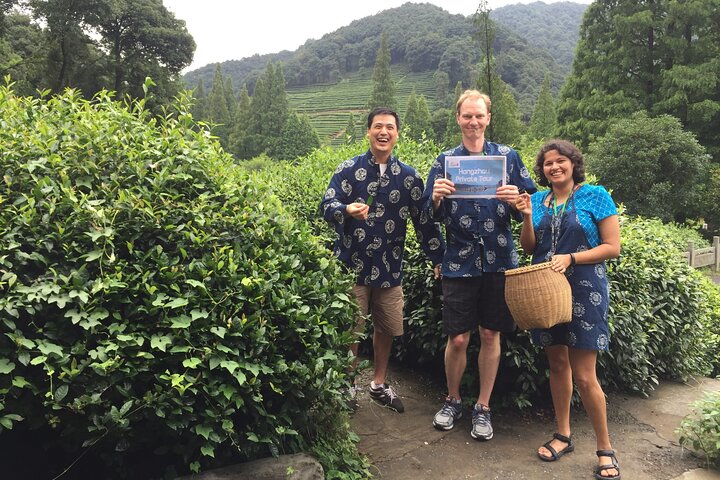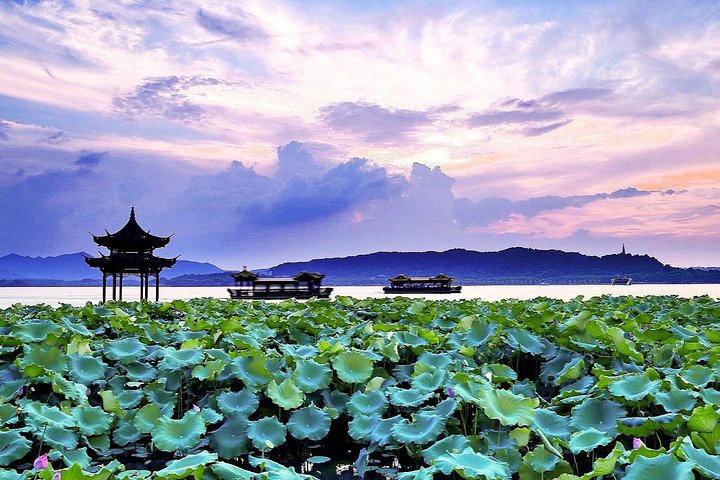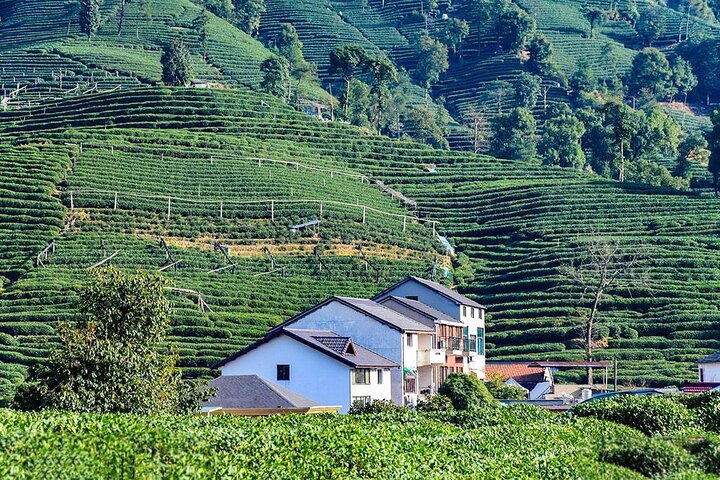Exploring Hangzhou: A Journey Through Tea and Tradition
Drawn by the allure of Hangzhou’s tea culture and scenic beauty, I embarked on a journey to explore the city’s rich traditions. From a serene cruise on West Lake to the immersive experience of a tea ceremony, my adventure was a deep dive into the heart of Chinese culture.
A Morning on West Lake
As the sun rose over Hangzhou, I found myself aboard a scenic cruise on the serene waters of West Lake. The cool breeze carried the scent of blooming lotus flowers, and the gentle ripples of the lake mirrored the surrounding mountains. Our guide, Gerry, was a fountain of knowledge, pointing out the shrines and temples nestled on the cliff sides. The sight of the three pagodas, a UNESCO World Heritage Site, was particularly striking, standing as silent sentinels of history. On the opposite shore, the bustling heart of Hangzhou was visible, a reminder of the city’s vibrant blend of tradition and modernity.
The cruise was a perfect introduction to Hangzhou’s rich cultural tapestry. As we glided across the water, Gerry shared stories of the lake’s significance in Chinese literature and art, painting a vivid picture of its historical importance. It was a moment of mindfulness, a chance to connect with the past while appreciating the beauty of the present.
Immersed in Tea Culture
Our next stop was the Meijiawu Tea Village, the birthplace of the renowned Dragon Well tea. As someone who grew up in a household where tea was more than just a beverage, this experience was particularly meaningful. We were welcomed by a local tea specialist who guided us through the lush tea plantations. With bamboo baskets in hand, we learned the art of selecting the perfect tea leaves, a skill that requires patience and precision.
The highlight of the visit was the tea ceremony, where we were introduced to the delicate process of stir-frying the leaves. The aroma of freshly harvested green tea filled the air, and the taste was nothing short of exquisite. Gerry’s insights into the cultural significance of tea in Chinese society added depth to the experience, reminding me of the universal language of tea that transcends borders.
Temples and Traditions
Our journey continued to the Lin Yin Temple, where the ancient art of stone carving came to life. The Buddhas etched into the cliffside were a testament to the skill and devotion of the artisans who created them. As we walked along a path beside a tranquil stream, Gerry recounted the temple’s history, weaving tales of spirituality and tradition.
A brief stop at a local restaurant provided a taste of Hangzhou’s culinary delights, with dishes that were as visually stunning as they were delicious. The meal was a feast for the senses, set against a backdrop of unforgettable views.
We concluded our tour at the matchmaking temple, where a local opera performance added a touch of cultural flair. The melodies resonated with the natural beauty surrounding us, creating a harmonious blend of art and nature. It was a fitting end to a day filled with discovery and reflection, a reminder of the rich cultural heritage that makes Hangzhou a must-visit destination.
















































